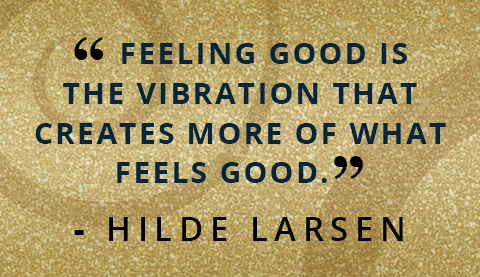In a perfect world, all food presented to us would be toxic free.
In a perfect world, what to eat would be a no-brainer.
In a perfect world, food would be available for everyone.
“By cleaning up my plate, step by step, my physical AND emotional body has rewarded me with amazing energy and a feeling of wellbeing.”
From being bedridden with pain, and autoimmune diagnosis from hell, I was able to step-by-step climb my way back to life. I was able to allow life and joy to join me, through letting go of all the toxic substances, thoughts and beliefs I had been feeding myself.
No doubt eating clean, organic, fresh ripe fruits and vegetables are what we were designed to eat. No doubt it is the diet that will allow our body to detoxify and regenerate. The hard part is our conditioning. Our addictions and our need to follow the crowd. Even if it leads us to our grave.
Even if.
Packaged and processed foods get many a family through the day. They are convenient and portable, and they stay “fresh” for a long time (thanks to all those preservatives). The additives put into processed foods to make them look and taste better include unhealthy amounts of salt, fat, and sugar – and those are the ones you can pronounce. These additives, however, have a price that may include side effects, food allergies, increased waistlines, decreased absorption of minerals and vitamins, cancer and more.
The Dirty Dozen:
Below is a list of the 12 most pervasive and detrimental food additives and substances you can eat, in no particular order.
1. Artificial Sweeteners:
Artificial sweeteners are a combination of chemicals that exist to make our foods sweeter without the calories of sugar. Most artificial sweeteners have side effects, and their chemical breakdown in the body can be toxic. In addition, in combination with other food additives like artificial colors, artificial sweeteners can have a much more potent effect on nerve cells. Artificial sweeteners link to over 90 side effects.
2. Refined Sugar:
People in the US consume 150 to 175 pounds of sugar per year. In other words, people are consuming half a cup of sugar a day and most aren’t even aware of it. Due to its insidious nature and the fact that it can be found in virtually all processed foods unless they say “sugar-free,” we subsist on sugar. High consumption of sugar and the corresponding elevated insulin levels can cause weight gain, bloating, fatigue, arthritis, migraines, lowered immune function, obesity, cavities and cardiovascular disease. It can also disrupt absorption of nutrients, possibly leading to osteoporosis, depression, PMS symptoms and stress.
3. Monosodium Glutamate (MSG):
MSG is an excitotoxin used to bring out the flavor in foods. Excitotoxins are toxins that bind to certain receptors (e.g., certain glutamate receptors). According to Dr. Russell Blaylock, an author and neurosurgeon, excitotoxins can cause sensitive neurons to die. Many people experience a host of other side effects like headaches, itchy skin, dizziness and respiratory, digestive, circulatory and coronary concerns.
4. Artificial Colors:
Artificial colors are synthetic chemicals that do not occur in nature. Most are derived from coal tar and can contain up to 10 parts per million of lead and arsenic and still be generally recognized as safe by the FDA. Artificial colors can cause allergic reactions and hyperactivity and ADD in children and may contribute to visual and learning disorders or cause nerve damage.
5. BHA and BHT:
BHA and BHT block the process of oil rancidity. These additives seem to affect sleep and appetite and have been associated with liver and kidney damage, hair loss, behavioral problems, cancer, fetal abnormalities and growth retardation.
6. Sodium Nitrate and Nitrite:
Sodium nitrate and nitrite are preservatives that are added to processed meat products. These compounds transform into cancer-causing agents called nitrosamines in the stomach. Noticeable side effects include headaches, nausea, vomiting, and dizziness.
7. Caffeine:
Caffeine is an addictive stimulant found in soft drinks, gum, diet pills and pain relievers; it naturally occurs in coffee, cocoa, and tea. Caffeine causes calcium to be excreted from the bones, which can lead to osteoporosis and increase infertility.
8. Olestra (Olean):
Olestra is a calorie-free fat substitute used as an ingredient in snacks and chips. Olestra inhibits the absorption of some vitamins and other nutrients. It can also cause diarrhea and anal leakage.
9. Brominated Vegetable Oil (BVO):
Brominated vegetable oil is used to keep flavor oils in soft drinks in suspension. When consumed, it is stored in fat and over time can accumulate. This additive can lead to reproductive interference and birth defects. It has been banned in 100 countries.
10. Partially Hydrogenated Vegetable Oil:
Partially hydrogenated vegetable oil is made by reacting vegetable oil with hydrogen. When this occurs, the level of polyunsaturated oils (good fat) is reduced and trans fats are created. They are associated with heart disease, breast and colon cancer, atherosclerosis and elevated cholesterol.
11. Pesticides:
Every year more than two billion pounds of pesticides are added to our food supply. That’s about 10 pounds per person per year. Many of the pesticides used throughout the world are carcinogenic. Pesticide accumulation also undermines our ability to resist infectious organisms, may impair fertility and contributes to miscarriages and birth defects.
12. Genetically Modified Organisms (GMOs):
GMOs are plants or animals that have had their DNA modified. In the US, the majority of the corn, soybean, cotton and canola crops are now genetically modified, and one or more of these can be found in nearly every processed food. GMOs have not been proven to be safe and some studies show GMO’s may decrease immunity to diseases in plants as well as humans, may cause resistance to antibiotics and may have a negative impact on genetic function. Plants that are genetically modified to be resistant to disease, pesticides, and insecticides could diminish the need to use these strong chemicals, or adversely, may build up a resistance and therefore require even larger amounts of chemicals than before. It is still too soon to tell: there is no long-term supporting evidence at this time.
I found that looking for health became much easier once I understood why I was sick. When I realized what I had been doing to myself, it became crystal clear to me why I was suffering. While everything is perfect in nature, what we have become by moving away from it is not. It has created suffering, and we see it all around us. Being sick is not natural, being healthy is! It is what we are designed to be. There is nothing natural about having a body that is imbalanced, tired, sick and in pain.
There are no so-called dis-eases in nature. There are no animals with rheumatoid arthritis, diabetes, multiple sclerosis or asthma. I have never read or heard of any wild animal suffering with any so-called chronic disease. They are not allergic to the foods that they eat, and they do not get fat and tired. When they get sick, from a bacteria or a trauma, they lie down and rest, drinking only water, so that their body can heal and restore. Regeneration is therefore supported, and nature can take its course. The first time I read this, I “knew” it was important.
You see, in nature, every species lives in harmony with Mother Earth. They eat a clean and specific diet, far from GMO and artificial sweeteners.
From living in harmony with sunrise and sundown, the seasons are honored, and the food is gathered and killed for survival. Eating is not linked to suppressing emotions or feeding different types of addictions. Nature has a perfectly harmonic way of existing, and the further away from that harmony that we stray, the more trouble we are in. The further from the truth that we wander, the more despair we will experience.
As a species, we as humans keep drifting away from our natural path. This is where healing got lost, and dis-ease manifested.
Step up to your plate, and make sure it is as clean as it can be. We can always do the best we can, with what we have available to us.
Steering away from these dirty dozen will help your family stay healthy and vibrant.
You deserve it!
Hilde
The 12 dirty dozen are partially excerpted from a post in the January 2008 issue fooddemocracy.com by Kelly Scotti and supplemented with information from the Center for Science in the Public Interest http://www.cspinet.org/reports/chemcuisine.htm









